For any candidate preparing for the AWS Certified Solutions Architect – Associate (SAA-C03) exam, understanding the precise number of questions is a critical first step. This figure is the foundation upon which an effective study schedule and a robust time management strategy are built. The SAA-C03 exam is one of the most sought-after certifications in the cloud industry, designed to validate an individual’s ability to design secure, resilient, and cost-optimized solutions based on the AWS Well-Architected Framework.1 Knowing the exam’s structure is essential for navigating its challenges successfully. This guide provides a definitive, fact-based breakdown of the SAA-C03 exam, moving beyond the simple question count to reveal the full structure, intricate scoring model, and the strategic implications every candidate must understand to pass.
The AWS Certified Solutions Architect – Associate (SAA-C03) exam consists of a total of 65 questions. However, only 50 of these questions are scored and contribute to the final result. The remaining 15 questions are unscored. Candidates are given 130 minutes to complete the exam and must achieve a minimum passing score of 720 on a scale of 100–1,000.1
While these numbers provide a basic framework, true preparation requires a deeper understanding of the meaning behind them. What types of questions will be presented? Why are some questions unscored, and how can they be identified? How is the 720 passing score actually calculated? Answering these questions is the key to transforming raw data into a strategic blueprint for success. This report will deconstruct each of these elements to provide a comprehensive guide for any serious SAA-C03 candidate.
Blog Claim: Understanding the intricate structure and scoring mechanics of the SAA-C03 exam is just as critical to passing as mastering the technical AWS service knowledge.
Table of Contents
What Is the Exact Format and Scoring Breakdown for the SAA-C03 Exam?
A granular analysis of the SAA-C03 exam’s mechanics reveals a carefully designed assessment that tests not only knowledge but also practical application and decision-making under pressure. Moving beyond the total question count, it is imperative for candidates to understand the specific types of questions they will encounter, the rules governing how their performance is evaluated, and the logistical constraints of the test. This information is fundamental to building an effective test-taking strategy that maximizes the chances of success.
The SAA-C03 exam features two question formats: multiple-choice, with one single correct answer, and multiple-response, requiring two or more correct selections. The exam is pass/fail, and a scaled score of 720 out of 1,000 is required to pass. There is no penalty for incorrect answers, meaning unanswered questions are simply marked as incorrect.1
A detailed exploration of the exam’s logistics and question formats provides a clear picture of the challenge ahead.
Question Types Explained
The exam utilizes two distinct formats to assess a candidate’s knowledge 1:
- Multiple Choice: This format presents a question with four possible answers, where only one is correct and the other three are incorrect “distractors.” These questions test a candidate’s ability to identify the single best solution from a set of plausible options, often requiring a nuanced understanding of a service’s primary use case or configuration.
- Multiple Response: This more complex format presents a question with five or more response options, requiring the candidate to select two or more correct answers. These questions are generally more challenging as they demand a deeper and more comprehensive understanding to identify all the correct components of a complete solution. Community discussions suggest candidates can expect to see roughly 10 to 15 of these questions, although the exact number varies with each unique exam form.7
Scoring Mechanics
The scoring system is designed to provide a standardized measure of competency 1:
- The exam is scored on a scale of 100 to 1,000, with a minimum passing score of 720.1
- It employs a compensatory scoring model. This means a candidate does not need to achieve a passing score in each individual content domain. A strong performance in a heavily weighted domain like “Design Secure Architectures” can compensate for a weaker performance in another. The only requirement is to pass the overall exam.1
- Critically, unanswered questions are scored as incorrect, and there is no penalty for guessing.1 This is a vital piece of strategic information; candidates should ensure they provide an answer for every single question, even if it is an educated guess.
Time and Cost
- The official time limit to complete the exam is 130 minutes.3 With 65 total questions, this averages to exactly
two minutes per question, a pace that demands efficient time management.5 - The cost to take the exam is 150 USD, though this can vary based on currency exchange rates.4
- An important accommodation is available for non-native English speakers, who can request an additional 30 minutes (“ESL +30”) before scheduling their exam.9
The following table consolidates these critical logistical details into a single, easy-to-reference format.
| Feature | Detail | Source(s) |
| Total Questions | 65 | 3 |
| Scored Questions | 50 | 1 |
| Unscored Questions | 15 | 1 |
| Time Limit | 130 minutes | 3 |
| Average Time per Question | ~2 minutes | 5 |
| Question Formats | Multiple Choice & Multiple Response | 1 |
| Passing Score | 720 (scaled) | 1 |
| Scoring Range | 100 – 1,000 | 1 |
| Penalty for Guessing | None | 1 |
| Exam Cost | 150 USD | 4 |
The structure of the exam has significant implications. The questions are not simple fact-recall exercises; they are “scenario-based,” often presenting a paragraph-long real-world problem that requires careful reading and analysis before a solution can be selected.5 When this is combined with the presence of challenging multiple-response formats and the strict two-minute-per-question time limit, it creates a high-pressure environment. The exam’s design is therefore implicitly testing a candidate’s ability to perform under pressure. Success is not just about knowing the right AWS service; it is about being able to quickly parse a business problem, eliminate incorrect “distractors,” and confidently select the optimal solution within a very constrained timeframe. This makes practicing with timed exams an essential, non-negotiable part of any serious preparation plan.10
Sub-heading claims: Mastering the SAA-C03 exam requires not only technical proficiency but also a strategic approach to its specific question formats and the 720-point scaled scoring threshold.
Why Does the Exam Include 15 Unscored Questions?
One of the most frequently discussed and misunderstood aspects of the SAA-C03 exam is the inclusion of 15 unscored questions. For many candidates, the idea that nearly a quarter of the questions they answer will have no bearing on their final score can be a source of confusion and anxiety. However, understanding the purpose of these questions reveals them to be a standard and necessary component of a high-stakes certification program, and knowing their function can provide a significant psychological advantage on exam day.
The 15 unscored questions on the SAA-C03 exam are experimental items that do not affect your final score. AWS includes them to gather performance data and statistically validate new questions before they are introduced into the pool of scored items in future exam versions.1
The Rationale: Quality Control and Exam Integrity
AWS, like other major certification bodies, uses unscored questions as a vital quality control mechanism. This process, known as pre-testing, is essential for maintaining the integrity, relevance, and statistical reliability of the certification over time.1 Before a new question can be used to judge a candidate’s competency (i.e., be scored), AWS needs to ensure it is valid, fair, and performs as expected. By including new questions as unscored items, AWS can collect data on how a large and diverse pool of candidates performs on them. This data is used to gauge a question’s difficulty, clarity, and ability to differentiate between candidates with varying levels of knowledge.15
Indistinguishable from Scored Questions
A critical point for test-takers is that these 15 unscored questions are not identified on the exam.3 They are randomly mixed in with the 50 scored questions. From the candidate’s perspective, all 65 questions will look and feel the same. There is no flag, marker, or any other indicator to distinguish a scored item from an unscored one.
Strategic Implications for Test-Takers
The primary implication of this practice is psychological. During the exam, a candidate may encounter a question that seems unusually difficult, covers an obscure service feature, or appears poorly worded. In such a moment, it is crucial not to panic or waste an excessive amount of time. There is a reasonable probability that this challenging question is an unscored, experimental item being tested for future use.14
The presence of these indistinguishable experimental questions introduces a subtle psychological variable into the exam experience. Because they are new and uncalibrated, their difficulty and quality may vary significantly from the polished, scored questions. A candidate could, by chance, encounter a cluster of these difficult experimental items, leading them to believe the exam is harder than it actually is. This perception could induce anxiety and negatively impact performance on subsequent questions that are, in fact, scored.
Therefore, the most resilient test-taking strategy is one of strategic acknowledgment followed by complete disregard. Before the exam, a candidate should acknowledge that some questions will not count, which can serve as a mental safety net (“don’t panic if one question seems impossible”). However, during the exam, actively trying to identify which questions are unscored is a counterproductive trap. The only effective approach is to treat all 65 questions as equally important, giving each one the best possible effort within the allocated time budget and then moving on.
Sub-heading claims: The 15 unscored questions are a vital quality control mechanism for the exam’s long-term integrity and have absolutely no direct impact on a candidate’s pass or fail status.
How Does Question Difficulty Affect the 720 Passing Score?
To fully grasp the SAA-C03 exam’s evaluation process, it is essential to move beyond the simple “720 out of 1000” figure and understand the sophisticated scoring system that underpins it. A common misconception among candidates is to treat the passing score as a fixed percentage, leading to inaccurate calculations about how many questions they can afford to miss. The reality is that AWS uses a scaled scoring model, a standard industry practice designed to ensure fairness and consistency across all administrations of the exam.
AWS uses a scaled scoring model to ensure fairness across different versions (or “forms”) of the exam, which may have slight variations in difficulty. A score of 720 always represents the same minimum standard of competency, regardless of the specific set of questions a candidate receives.1
Debunking the “Percentage” Myth
A frequent mistake candidates make is to assume that a 720 score is equivalent to 72% of the total points, which would imply needing to answer 36 of the 50 scored questions correctly. This line of thinking is incorrect.16 The final score is not a direct or linear representation of the percentage of correct answers. The process is more complex and is designed to measure a specific level of competency, not just a raw count of right answers.
The Concept of Multiple Exam Forms
To maintain security and integrity, AWS maintains a very large bank of questions for the SAA-C03 exam. When a candidate sits for the test, a unique set of 65 questions is “procedurally generated” for them, creating what is known as an “exam form”.7 While all of these forms are built to the same official blueprint (covering the four domains in their specified proportions), the overall difficulty of the questions in one form may be slightly higher or lower than in another, based on statistical analysis of past candidate performance.1
How Scaled Scoring Works
Scaled scoring is the psychometric process used to account for these minor differences in difficulty between exam forms. It works by translating a candidate’s raw score (the number of questions answered correctly) onto a common, consistent scale that ranges from 100 to 1,000. This ensures that every candidate is held to the exact same standard of knowledge, regardless of which form they received. If a candidate receives an exam form that is determined to be statistically harder, they may need to answer slightly fewer questions correctly to achieve the 720 passing score than a candidate who receives an easier form.17 This is why AWS states that the scaled score “shows how you performed on the exam as a whole” and provides “comparability across multiple exam forms”.1
This system reveals that the SAA-C03 exam is not a static test but a dynamic assessment system with a vast, rotating question bank. The scaled scoring model is a crucial fairness mechanism that accounts for the statistical reality that not all exam instances are equally difficult. This understanding should fundamentally shift a candidate’s preparation goal. Instead of trying to hit a specific “magic number” of correct answers, the focus must be on demonstrating a consistent and high level of competency across all exam domains. It is this demonstrated competency that the scaled score truly measures. The goal is to build a level of knowledge so robust that it can withstand any random draw of questions from the bank, regardless of their individual difficulty.
Sub-heading claims: The 720 passing score is a scaled competency benchmark, not a raw percentage, meaning the exact number of correct answers required to pass is not fixed and depends on the difficulty of the specific exam form administered.
How Should This Exam Structure Influence Your Preparation Strategy?
Synthesizing all the structural and scoring information into an actionable plan is the final and most important step for any candidate. Understanding the exam’s format is only valuable if it informs and shapes the “how” of preparation. The architecture of the SAA-C03 exam—from its weighted domains and scenario-based questions to its strict timing—provides a clear roadmap for the most effective study strategy.
Your preparation should prioritize deep conceptual understanding and hands-on practice across the four weighted exam domains, especially the heavily weighted “Design Secure Architectures.” Use high-quality, timed practice exams to master the two-minute-per-question pace required to succeed on the scenario-based questions.
Focus on the Official Blueprint (The Four Domains)
The official SAA-C03 exam guide provides the blueprint for the test, breaking the content into four distinct domains, each with a specific weighting.5 A candidate’s study time and effort should be allocated in direct proportion to these weightings. This structure is not arbitrary; it is designed to test a candidate’s ability to think like a real-world solutions architect, constantly balancing different requirements based on the principles of the AWS Well-Architected Framework.1
The following table outlines the official exam domains and their respective weights, providing a clear guide for prioritizing study topics.
| Domain | % of Scored Content | Key Focus Areas |
| Domain 1: Design Secure Architectures | 30% | IAM (users, roles, policies), VPC security (NACLs, Security Groups), data encryption at rest (KMS) & in transit (ACM/TLS), AWS WAF, Shield, Secrets Manager 8 |
| Domain 2: Design Resilient Architectures | 26% | High availability across Availability Zones/Regions, disaster recovery strategies, scalable and loosely coupled architectures (SQS, SNS), Auto Scaling 8 |
| Domain 3: Design High-Performing Architectures | 24% | Selecting performant storage (S3, EBS, EFS), compute (EC2 instance types), and databases (RDS, DynamoDB, ElastiCache), global architectures (CloudFront, Global Accelerator) 8 |
| Domain 4: Design Cost-Optimized Architectures | 20% | Cost-effective storage tiers (S3 Intelligent-Tiering, Glacier), compute purchasing options (Spot Instances, Reserved Instances, Savings Plans), right-sizing resources, serverless solutions (Lambda) 5 |
Embrace Scenario-Based Learning
The SAA-C03 exam is not a test of rote memorization. It is composed almost entirely of scenario-based questions that require the application of knowledge to solve a specific business or technical problem.5 This means that study methods must go beyond flashcards and simple definitions. Preparation must include hands-on labs and extensive practice with questions that present a problem statement, such as “A company needs to archive large amounts of data at the lowest possible cost…”.20 This emphasis on practical application is why AWS officially recommends at least one year of hands-on experience designing solutions on its platform.8
Master Time Management with Practice Exams
Given the strict two-minute-per-question average, candidates must be able to read, comprehend, analyze, and answer complex questions efficiently. This skill can only be developed through practice under timed conditions. High-quality practice exams from trusted sources are invaluable for simulating the pressure of the real exam and honing time management skills.5 A sound strategy is to aim for consistent scores above 80-85% on these practice tests, which indicates a strong command of both the material and the pace required for success.5
Ultimately, the entire structure of the SAA-C03 exam is deliberately engineered to be a proxy for the real-world job of a solutions architect. The exam’s title, its action-oriented “Design…” domains, and its foundation in the AWS Well-Architected Framework all point to a test that rewards practical, architectural thinking.1 The heavy weighting of the security domain reflects its paramount importance in any real-world cloud deployment.8 Therefore, the most effective preparation strategy is to study
like an architect. This means that instead of just learning what AWS Lambda is, a candidate should be able to articulate why they would choose Lambda over an EC2 instance for a specific workload, considering the trade-offs between performance, cost, security, and operational resilience. This approach of constantly comparing services and applying them to hypothetical scenarios aligns directly with the core competency the exam is designed to measure.2
Sub-heading claims: An effective SAA-C03 study plan directly mirrors the exam’s blueprint, allocating the most time to heavily weighted domains and using rigorous, timed practice exams to master the application of knowledge in realistic scenarios.
Conclusion
The AWS Certified Solutions Architect – Associate (SAA-C03) exam is a comprehensive assessment that extends far beyond simple knowledge recall. A thorough understanding of its structure is a prerequisite for success. The exam consists of 65 questions to be completed within a 130-minute timeframe. Of these, 50 questions are scored, while 15 are unscored experimental items that do not impact the final result. The passing threshold is a scaled score of 720, a benchmark of competency that is adjusted for minor variations in exam difficulty to ensure fairness for all candidates.
The key strategic takeaways derived from this structure are clear. Candidates must prepare for two distinct question formats—multiple-choice and multiple-response—and recognize that there is no penalty for guessing. The existence of unscored questions should serve as a psychological buffer against panic when encountering an unusually difficult item, but should otherwise be ignored during the test. The scaled scoring model reinforces the need for deep conceptual mastery across all domains, rather than focusing on a specific number of correct answers.
Ultimately, the most effective preparation strategy is one that mirrors the exam’s design. It requires a focus on the four weighted content domains, an emphasis on hands-on, scenario-based learning to solve real-world problems, and rigorous practice under timed conditions to master the demanding pace. By internalizing this structural knowledge, candidates can move beyond uncertainty, prepare intelligently, and approach the SAA-C03 exam with the strategy and confidence needed to succeed.
External links recommendations
- (https://d1.awsstatic.com/training-and-certification/docs-sa-assoc/AWS-Certified-Solutions-Architect-Associate_Exam-Guide_C03.pdf)
- (https://aws.amazon.com/certification/certified-solutions-architect-associate/)
- (https://docs.aws.amazon.com/wellarchitected/latest/framework/well-architected-framework.pdf)
- (https://explore.skillbuilder.aws/learn/course/external/view/elearning/11458/aws-certification-official-practice-question-set-aws-certified-solutions-architect-associate-saa-c03-english)
- (https://aws.amazon.com/blogs/training-and-certification/demystifying-your-aws-certification-exam-score/)
Works cited
- AWS Certified Solutions Architect – Associate (SAA … – awsstatic.com, accessed August 25, 2025, https://d1.awsstatic.com/training-and-certification/docs-sa-assoc/AWS-Certified-Solutions-Architect-Associate_Exam-Guide_C03.pdf
- AWS Certified Solutions Architect Associate Exam – SAA-C03 Study …, accessed August 25, 2025, https://tutorialsdojo.com/aws-certified-solutions-architect-associate-saa-c03/
- How to Pass the AWS CSAA Certification Exam (SAA-C03) – MedCerts, accessed August 25, 2025, https://medcerts.com/blog/how-to-pass-aws-csaa-saa-c03
- The new AWS Solutions Architect Associate exam: What you should know – Pluralsight, accessed August 25, 2025, https://www.pluralsight.com/resources/blog/cloud/new-aws-saa-c03-exam
- Understanding the AWS Certified Solutions Architect SAA-C03 Exam, accessed August 25, 2025, https://www.exam-labs.com/blog/understanding-the-aws-certified-solutions-architect-saa-c03-exam
- Best AWS Certified Solution Architect Associate SAA-C03 Exam Dumps 2025 – Dumpsgate, accessed August 25, 2025, https://dumpsgate.com/dumps/aws-saa-c03-exam-questions/
- SAA C03 – how many “Choose Two” multi answer questions out of 65 do we see on an average per test? : r/AWSCertifications – Reddit, accessed August 25, 2025, https://www.reddit.com/r/AWSCertifications/comments/15xp1ug/saa_c03_how_many_choose_two_multi_answer/
- AWS Certified Solutions Architect – Associate (SAA-C03) Exam Guide – awsstatic.com, accessed August 25, 2025, https://d1.awsstatic.com/training-and-certification/docs-sa-assoc/AWS-Certified-Solutions-Architect-Associate_Exam-Guide.pdf
- SAA-C03 exam duration : r/AWSCertifications – Reddit, accessed August 25, 2025, https://www.reddit.com/r/AWSCertifications/comments/1bs8inh/saac03_exam_duration/
- How Difficult Is the AWS Solutions Architect Associate Exam?, accessed August 25, 2025, https://www.whizlabs.com/blog/aws-solutions-architect-associate-exam/
- How I passed AWS SAA-C03 in one take | by Amber Fung, accessed August 25, 2025, https://towardsaws.com/how-i-passed-aws-saa-c03-in-one-take-02ef7d3edebb
- AWS Solutions Architect Associate (SAA-C03) Cheat Sheet – Stellex Group, accessed August 25, 2025, https://www.stellexgroup.com/blog/aws-solutions-architect-associate-saa-c03-cheat-sheet
- AWS Certified Solutions Architect Associate Practice Exams SAA-C03 2025, accessed August 25, 2025, https://portal.tutorialsdojo.com/courses/aws-certified-solutions-architect-associate-practice-exams/
- How I passed AWS Solutions Architect Associate (SAA-C03) | by Sricharan_gk – Medium, accessed August 25, 2025, https://medium.com/@sricharan_gk/how-i-passed-aws-solutions-architect-associate-saa-c03-9bba3a41c4b1
- Demystifying your AWS Certification exam score, accessed August 25, 2025, https://aws.amazon.com/blogs/training-and-certification/demystifying-your-aws-certification-exam-score/
- SAA C003 how many questions can you get wrong? : r/AWSCertifications – Reddit, accessed August 25, 2025, https://www.reddit.com/r/AWSCertifications/comments/17ptc1q/saa_c003_how_many_questions_can_you_get_wrong/
- My SAA-C03 AWS Certified Solutions Architect – Associate Exam Experience, accessed August 25, 2025, https://tutorialsdojo.com/my-thoughts-on-the-new-aws-certified-solutions-architect-saa-c03-exam/
- AWS Solution Architect (AWS SAA-C03) Syllabus & Study Guide – KnowledgeHut, accessed August 25, 2025, https://www.knowledgehut.com/blog/cloud-computing/aws-solution-architect-syllabus
- AWS Solutions Architect Syllabus (SAA-C03): Exam Domains, Topics & Study Guide (2025 Update) – DEV Community, accessed August 25, 2025, https://dev.to/skillboosttrainer/aws-solutions-architect-syllabus-saa-c03-exam-domains-topics-study-guide-2025-update-3ih7
- Amazon AWS Certified Solutions Architect – Associate SAA-C03 Actual Exam Questions, accessed August 25, 2025, https://www.examtopics.com/exams/amazon/aws-certified-solutions-architect-associate-saa-c03/view/
- AWS Certified Solutions Architect – Associate, accessed August 25, 2025, https://aws.amazon.com/certification/certified-solutions-architect-associate/
- AWS Certified Solutions Architect – Associate (SAA-C03) Cert Guide, 2nd Edition, accessed August 25, 2025, https://www.pearsonitcertification.com/store/aws-certified-solutions-architect-associate-saa-c03-9780137941582
- How to Pass the AWS Solutions Architect Associate (SAA-C03) Exam in 2025 – Medium, accessed August 25, 2025, https://medium.com/@mileperuma/how-to-pass-the-aws-solutions-architect-associate-saa-c03-exam-in-2025-4692a160c5f8

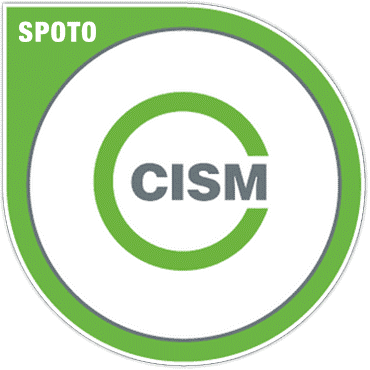


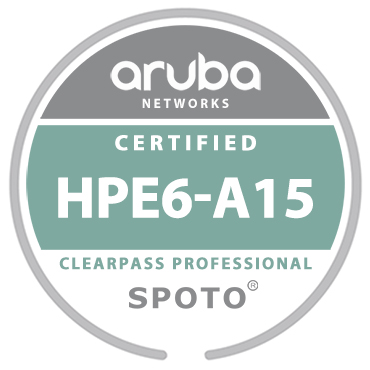
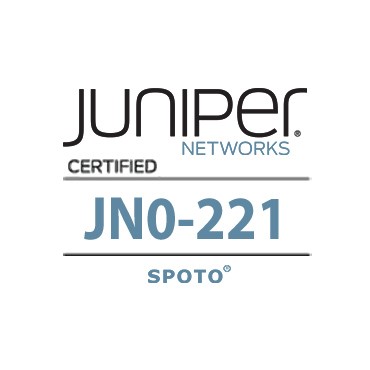
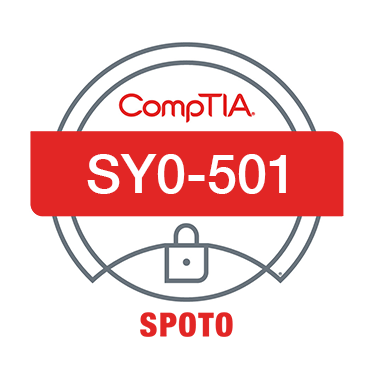

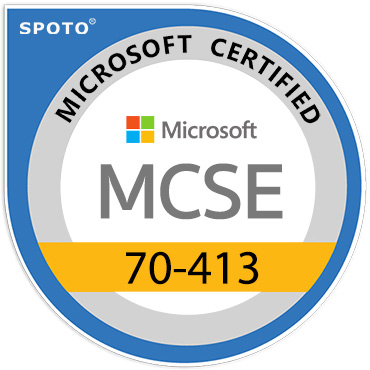

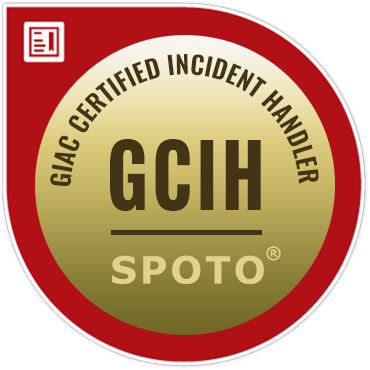

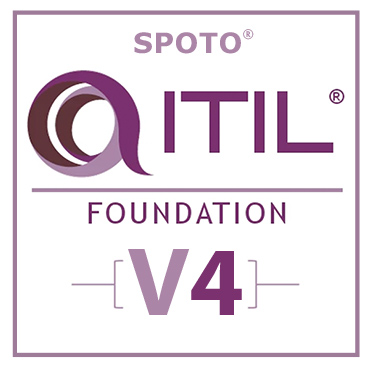




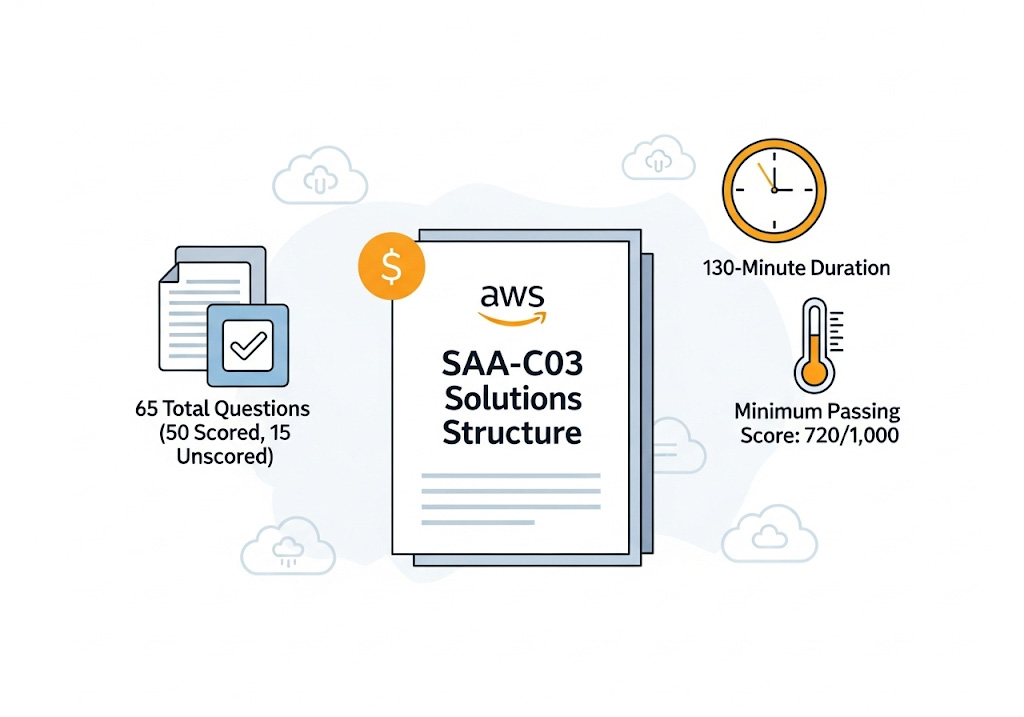
Comments